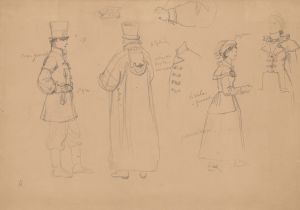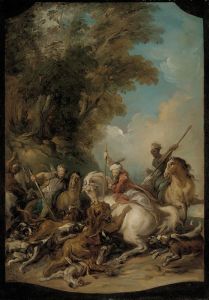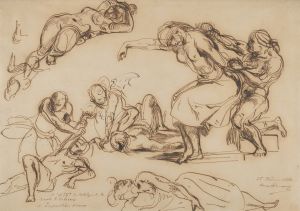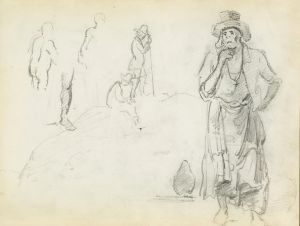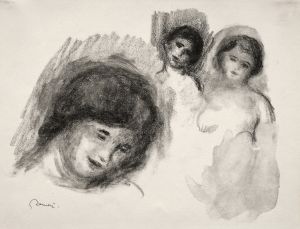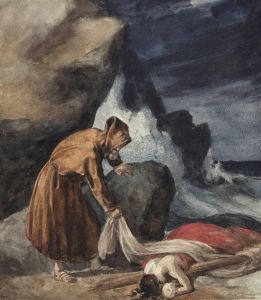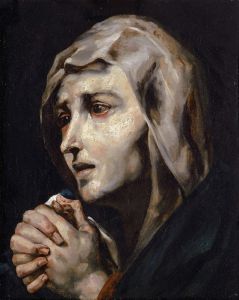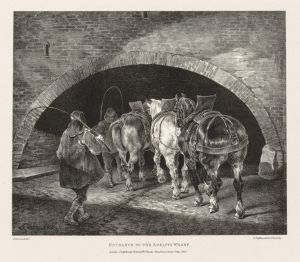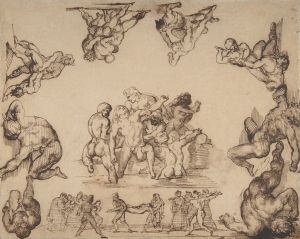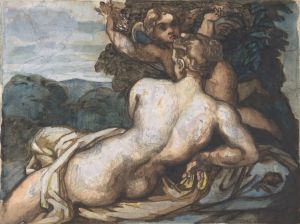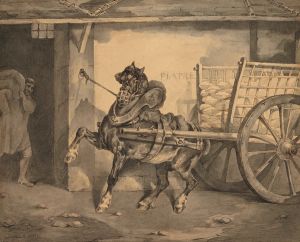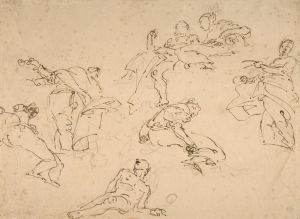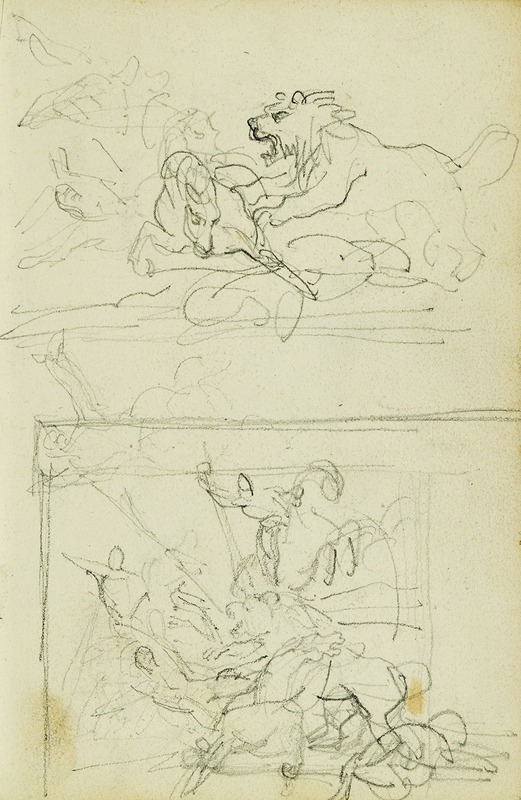
Two compositional studies of a lion hunt
A hand-painted replica of Théodore Géricault’s masterpiece Two compositional studies of a lion hunt, meticulously crafted by professional artists to capture the true essence of the original. Each piece is created with museum-quality canvas and rare mineral pigments, carefully painted by experienced artists with delicate brushstrokes and rich, layered colors to perfectly recreate the texture of the original artwork. Unlike machine-printed reproductions, this hand-painted version brings the painting to life, infused with the artist’s emotions and skill in every stroke. Whether for personal collection or home decoration, it instantly elevates the artistic atmosphere of any space.
Théodore Géricault, a prominent French Romantic painter, is best known for his dynamic and dramatic works that often depict intense human and animal interactions. Among his lesser-known but significant works are the "Two Compositional Studies of a Lion Hunt." These studies, created in the early 19th century, showcase Géricault's fascination with movement, energy, and the raw power of nature, themes that recur throughout his oeuvre.
The "Two Compositional Studies of a Lion Hunt" are preparatory works, likely intended as part of Géricault's exploration of large-scale compositions. These studies reflect his interest in the theme of hunting, a subject that was popular among Romantic artists of the time. The lion hunt, in particular, provided an opportunity to depict dramatic confrontations between humans and wild animals, emphasizing the tension, violence, and heroism often associated with such scenes.
In these studies, Géricault demonstrates his mastery of anatomy and his ability to capture dynamic movement. The figures of both the hunters and the lions are rendered with a sense of urgency and vitality, showcasing the artist's deep understanding of the physicality of his subjects. The composition is marked by dramatic contrasts of light and shadow, a technique Géricault frequently employed to heighten the emotional intensity of his works.
While these studies are not as widely recognized as Géricault's masterpiece "The Raft of the Medusa," they provide valuable insight into his artistic process and his engagement with Romantic themes. The lion hunt studies also reflect the broader cultural fascination with exoticism and the natural world that characterized the Romantic period in Europe.
The exact purpose or intended final form of these studies remains unclear, as there is no evidence that Géricault completed a finished painting based on them. However, they stand as a testament to his skill as a draftsman and his ability to convey drama and movement through composition.
Today, these studies are appreciated for their artistic merit and their contribution to understanding Géricault's body of work. They are often studied in the context of Romantic art and the broader trends of 19th-century European painting.





